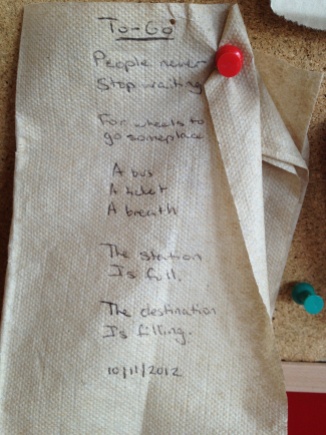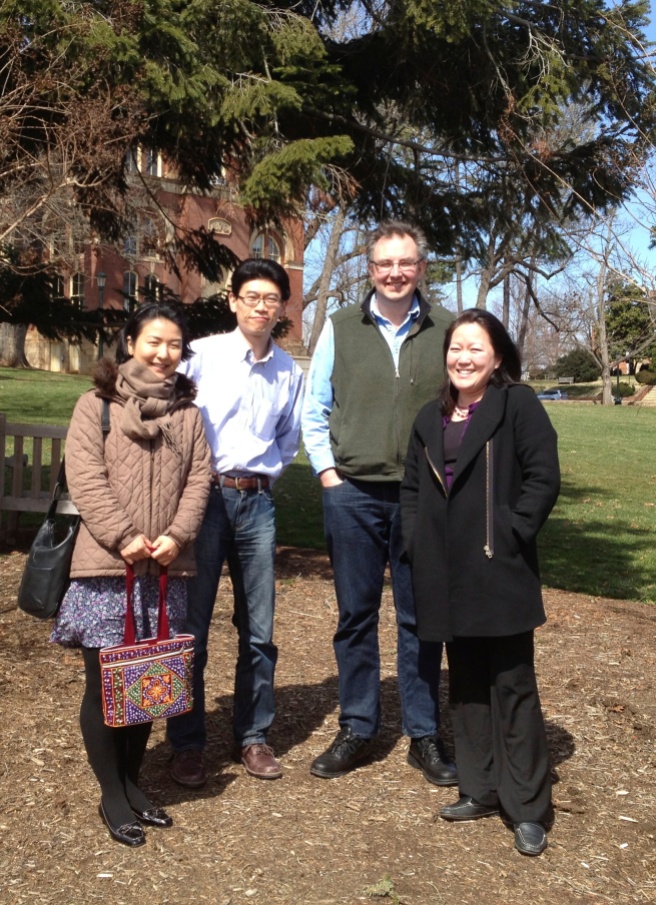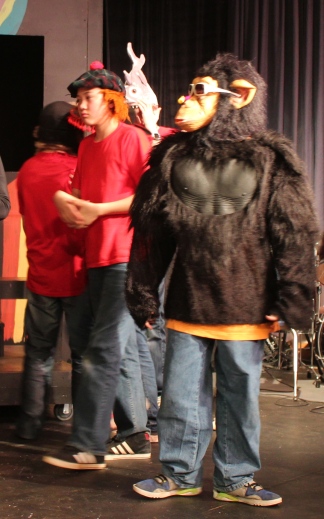In Korea the 21st day of a baby’s life (Saei-rye), the 100th day of life (Baek-il), the 1st birthday (Dol, or Doljanchi) and the 60th birthday (Hwangap) are considered important milestones. Long ago, when infant mortality rates were higher and average life expectancy much lower than they are now, reaching these milestones was truly something to celebrate. Today, though life expectancy has greatly improved, these milestones are still marked with age-old traditions and celebrations.
A Korean mother and her baby are basically in solitary confinement (samchil-il) for the first 21 days of the baby’s life. They are not supposed to leave the house, and no one (except maybe the mother’s mother) is allowed to visit. Traditionally, a straw rope would be hung across the gate in front of the house to announce a baby’s birth and gender, to warn people away, and to ward off evil spirits. If the baby was a boy, anatomically suggestive red chili peppers or tassels in the shape of peppers would be entwined in the rope:

Remind you of anything?
Pine twigs, representing longevity and virtue, would announce the birth of a baby girl. Bits of charcoal, representing purity, would be interspersed with the chili peppers and the pine twigs to chase away evil spirits.
When each of our nieces and nephews was born, my siblings and I were dying to go visit the baby right away, but were strictly forbidden to do so by my mother until the baby was 21 days old. When she found out that I had gone to a book fair with one of my own babies only days after giving birth, she was positively apoplectic. During the period of samchil-il, both the new mother and her baby are supposed to stay at home bundled in warm clothing to rest and recover from the ordeal of childbirth.
My son’s birth was indeed an ordeal. After 20 hours of labor, he was born with an alarmingly pointy head, jaundice, and a fever. I had a broken tailbone that left me unable to sit for 10 weeks and was a physical and emotional wreck. When we were discharged from the hospital, I was panic-stricken. Couldn’t the doctors and nurses see that I had no idea what I was doing? I was astonished at how irresponsible they were being to entrust this poor, helpless babe to someone as obviously unfit for motherhood as I was.
Those first weeks were a time of constant anxiety. I was given strict orders to nurse my baby every two hours to clear up his jaundice, but because of the jaundice, he was extremely sleepy and lethargic. I was instructed to do whatever I had to do in order to wake him up to nurse. A visiting nurse suggested that I wake him up by putting a cold wet washcloth on his face, but even that didn’t work. Trying to keep him awake, nurse him, and keep him wrapped in the biliblanket that was also supposed to help clear up the jaundice felt like a Sisyphean task.

“Leave me alone, can’t you see I’m trying to sleep here?!” (Can you see how he’s giving me the finger)?
Fortunately for me, my mother didn’t wait 21 days to come visit. When she arrived, the clouds finally parted. It was Easter. The sun was shining and the flowers were blooming. I look at photos of this day and I can see the relief and joy on my face:
My mother came with a bag full of exotic ingredients with which she cooked a gigantic cauldron of seaweed soup (miyuk gook) for me. This is the traditional postpartum food that a mother is supposed to eat for the first 21 days after giving birth. Why seaweed soup? The new mother is not supposed to eat or drink anything cold. She is also not supposed to eat anything that is hard to chew, as the gums have been weakened. More importantly, the iron, calcium, and iodine in seaweed are supposed to aid in the recovery after childbirth and milk production. Koreans traditionally eat this soup every year on their birthday, because it is so closely associated with birth. My mother urged me to eat this soup for breakfast, lunch, and dinner. I love Korean food, and my mother’s culinary skills are legendary, but there is no alchemy that can transform thick, rubbery bits of seaweed floating in broth into a palatable dish, especially when one is required to eat it three times a day. Every day she was there, my mother would heat up the soup and then sit across the table from me as I choked it down under her watchful gaze. The day she left, my mom made me promise to keep eating the soup until it was all gone.
I’ll never forget the utter despair I felt as my mom and dad drove away from our house to return to their own. I stood in the driveway clutching my baby and wailing disconsolately as I watched the car until it disappeared around the corner. I truly didn’t know how I could possibly manage without my mother there to help and guide me. I went back inside and ladled out a bowl of her seaweed soup with tears streaming down my face. My mother was no longer there, but I could taste her love in every slimy spoonful. I ate every last drop.





















































